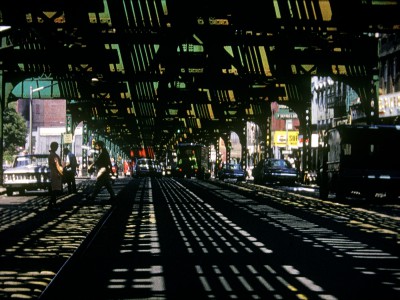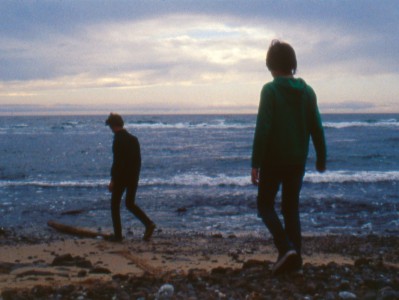
The Illuminations of Nathaniel Dorsky
Nathaniel Dorsky came to avant-garde cinema during a period of great awakening. Arriving in New York City in the early 1960s, he found himself surrounded by filmmakers who articulated the yearning for a wholly original film language. Dorsky’s own films persist in this quest for an intrinsic cinematic form, but they do so out of affection for balance, lightness, and quietude – hardly the hallmarks of an avant-garde director, but then Dorsky has long seemed less concerned with making it new than getting it right. When asked about his inspirations, he mentions Henry James, George Balanchine, Jack Spicer, Mozart, the T’ang Dynasty poets, and Piero della Francesca along with nearer models like Stan Brakhage and Gregory Markopolous. It’s an eclectic pantheon, to be sure, but one that reveals an underlying affinity for art that concentrates our attention through the fluent, direct expression of form.
The last decade has been the most productive of Dorsky’s career despite the stinging loss of his beloved Kodachrome. His films now arrive once or twice a year, each one around twenty minutes of silent projection shown at the reduced rate of 18 frames per second (what Dorsky calls the “sacred speed”). It was not always so. Seventeen years passed between his youthful Ingreen (1964) / A Fall Trip Home (1964) / Summerwind (1965) trilogy and Hours for Jerome (1982), during which time he relocated from New York to San Francisco. Hours for Jerome’s intricately arrayed illuminations of days gone by represents an early effort in the open montage style he developed alongside Jerome Hiler and Warren Sonbert. In this holistic understanding of editing, each shot radiates a vital attachment to every other shot in the film. The image is allowed to ripen to its fullness, at which point a precise cut reestablishes the metabolic energy of the film.
The tempo of August and After (2012), for instance, like Threnody (2004) before it, allows grief to trace a slow spreading course. Tender impressions near the end of filmmaker George Kuchar’s life rest in the poignant light of long afternoons. Everything that follows is touched as an afterimage: two workers sliding down a skyscraper, a distant glass door sweeping a ray of light across a café, some agitated steps into the bramble. A thrilling montage of packages and fruits carried down a Chinatown street, the actual things transfigured into pure color, signals the ever improbable return to life.
The contemplative conditions of Dorsky’s films invite us to see film’s intimate relationship to reality as a value in and of itself. As with any artisan, Dorsky’s muse is one and the same as his materials. Perhaps it’s easier to appreciate the tactile sense of color, volume, and texture now that we no longer make regular contact with the photochemical image. In Winter (2008), Sarabande (2008), and Compline (2009), the films with which he exhausted the last of his supply of Kodachrome, Dorsky delves into the voluptuous lower end of the benighted stock’s color values with the wholehearted abandon of someone in love.
Spellbound compositions extend this sense of discovery to the world in its unfolding. Audiences often comment that Dorsky’s films evoke the childlike way of looking at a thing before we know its name. To realize his unusual framings, which freely shed the rules of perspective for a primary awareness of light and movement, Dorsky explains that he wanders with his Bolex for several hours without conversation. The slowed frame rate realizes an aesthetic equivalent for this state of absorption, dipping the action just far enough outside the normal flow of reality to surface its latent beauties. When filming, Dorsky takes more care with the moment than the viewfinder. His astonishing intuitiveness as a cinematographer ensures the delicate passage from reverie to image while preserving the temptation to touch.
A shot is what happens when the exploratory impulse of Dorsky’s camerawork survives the exacting demands of his cuts. The fact that we so clearly discern these two distinct modes of attention in the same instance affords a special grace. The poet and critic Edwin Denby observed a similarly intoxicating quality in George Balanchine’s choreography: “The pleasure… is seeing these images as they happen; responding to the succession of their brilliant differences that gradually compose into a structure… The meaning of it, as of classical dancing generally, is whatever one loves as one watches it without thinking why.” The piece springs into being as it is perceived; whatever fineness of perception we find in the work we find also in ourselves. Indeed, Dorsky’s titles suggest that his films are intended as offerings: to the steadying hand of the seasons, the memory of friends, the hours of prayer, and finally, if still fleetingly, to us. – Max Goldberg, writer and frequent contributor to Cinema Scope
Once again, the Harvard Film Archive is grateful to celebrate the immeasurable artistry of Nathaniel Dorsky for two screenings. On Saturday, he will be joined by Charles Hallisey, Yehan Numata Senior Lecturer on Buddhist Literatures, as part of the The Mahindra Humanities Center’s Interdisciplinary Humanities Graduate Student Conference, “Imagining the Ineffable: Representation and Reality in Religion and Film.”








